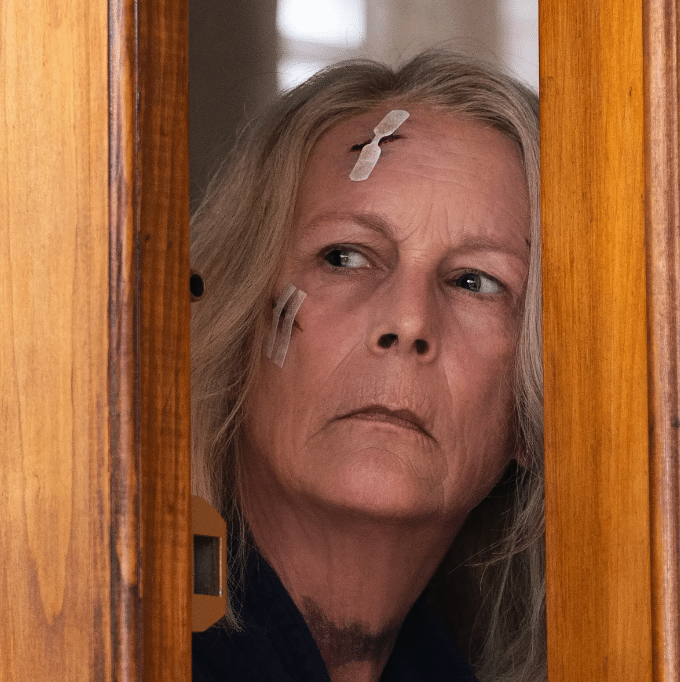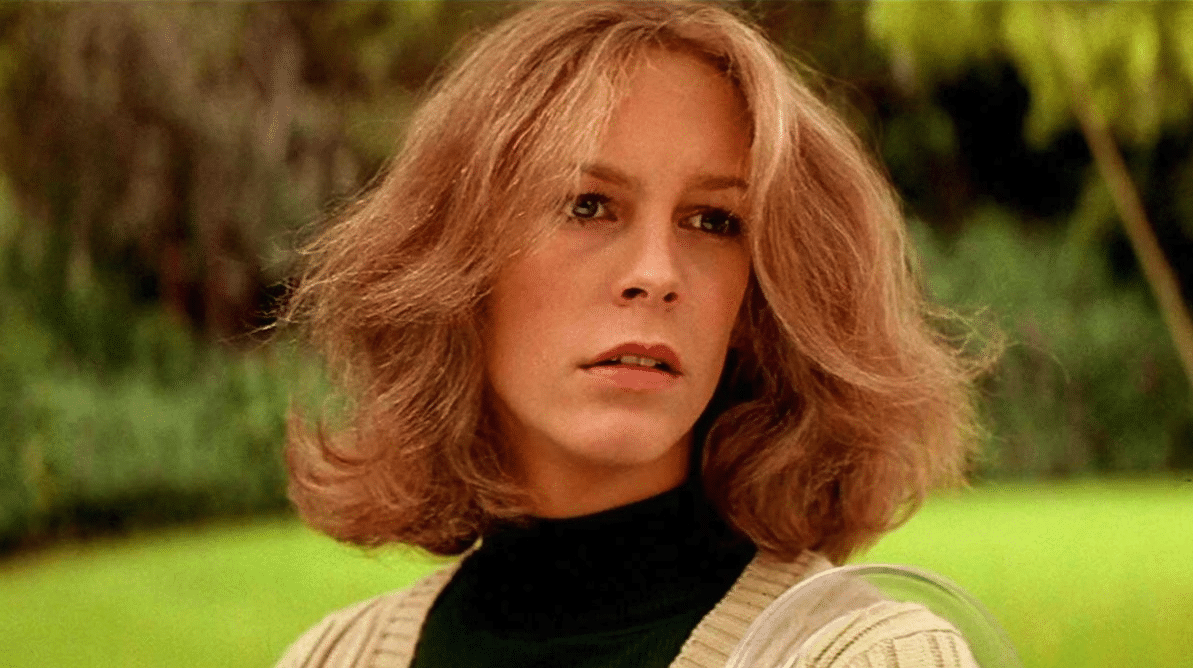October 31, 1978, Haddonfield, Illinois. Laurie Strode (Jamie Lee Curtis ) is babysitting with her friends. She’s responsible and mature, unlike her rowdy and carefree pals. On this night, Michael Myers (Nick Castle) escapes from a mental hospital and kills off the babysitters one by one. Laurie is the sole survivor …
Halloween (1978) is one of the most iconic and influential horror films ever made, and gave us an instantly terrifying villain in the form of masked madman Myers. But Jamie Lee Curtis also gave us something extremely significant through her portrayal of Laurie Strode: cinema’s first prominent ‘final girl’.
The final girl (referring to the last female to confront the killer) has become a common trope in horror movies, and final girls typically have a certain set of characteristics assigned to them. Usually, they’re young, resourceful, sensible and studious. By the end of the film, all their friends have been killed, and it’s usually the final girls’ smarts that help them stay alive and ahead of everyone else.
What went before
In the early days of horror, women were usually portrayed as naive and helpless victims who would simply scream instead of fighting back. Take any silent film, or early vampire flicks like Nosferatu and Dracula.
While Alfred Hitchcock eventually gave us a horror survivor in the form of Melanie Daniels (Tippi Hedren) in The Birds (1963), poor Marion Crane (Janet Leigh) didn’t even make it to the second half of Psycho (1960) before being mutilated by Norman Bates (Anthony Perkins).
Read: Classic horror films and scary hidden gems streaming now
Audiences began to see glimpses of what would become the final girl during the 1970s in films such as Black Christmas (1974), The Texas Chain Saw Massacre (1974) and Suspiria (1977). Massacre’s Sally (Marilyn Burns) was probably the closest to Halloween‘s final girl, but she screamed and ran away from Leatherface (Gunnar Hansen) rather than confront him.
Strode
Enter Laurie Strode. When Michael Myers stalks Laurie in daylight on the streets of Haddonfield, she notices something is off. When she’s supposed to babysit, she actually babysits instead of sneaking off to see a boy as previous characters of her sort might have. When she notices something is wrong, she investigates. When Michael attacks, Laurie is ready and fights back.
In doing so, she causes real harm to Michael. Even though he gets away so there can be multiple sequels, he’s hurt, and there is now a threat out there who knows his weaknesses.
Read: Best horror movies in Australia 2022
Hollywood latched onto this archetype and replicated it in every way possible. Take Ripley (Sigourney Weaver) in Alien (1979), Nancy (Heather Langenkamp) in A Nightmare On Elm Street (1984), and Sidney (Neve Campbell) in Scream (1996). These intelligent and logical women observed and avoided the mistakes that took out their friends, and used instinct and tactical nous to take down the enemy.
Scream, known for its meta-commentary of the genre it’s part of, carefully dissects the final girl trope within its own narrative. It even constantly refers to Halloween and Laurie Strode, including one scene where the characters watch the film and list the rules of surviving a horror movie.
One of them is that you can’t have sex, as the final girl is usually a virgin – a much-criticised element that seems to suggest that only the prudent should survive. But the rules of the final girl were about to change. The first sign was that Scream‘s Sidney Prescott had sex, and survived.
Read: Horror in Adelaide: Carnifex and Ribspreader bring gore and more
The past 20 or so years have seen Hollywood challenge, celebrate, mock and redefine what a final girl can be. Even mostly uncomplicated types like Erin (Sharni Vinson) in You’re Next (2011) or Maddie (Kate Siegel) in Hush (2016) subverted expectations by harbouring unique characteristics that help them survive, like Erin’s survivalist training and Maddie’s deafness.
Mean girls
Building on the commentary in Scream, Happy Death Day (2017) satirises elements of slasher films and final girls, giving us an unlikeable protagonist in mean girl Tree (Jessica Rothe). She’s someone audiences would expect to be killed off instantly, but positively develops throughout the film into a heroine worth rooting for.

Recent films have even taken their final girls and aligned them with the evil that once haunted them. The Witch (2015), Suspiria (2018) and Midsommar (2019) see their protagonists descend into madness as they embrace and relish in the darkness they were so afraid of. They are no longer the person they were in the beginning, if still human at all. It’s a morbidly satisfying arc that fits within the grim nature of the genre.
Read: Halloween Ends tops the Australian box office
Even Laurie Strode herself continues to shape and push the trope in its new direction. 2018’s Halloween sees the final girl in a new light, as Laurie deals with the long-term trauma from her encounter with Michael Myers all those years ago. We’re shown how it has affected her relationships and overall life. It’s an angle that gives the final girl new dimensions and depth, funnily enough, using the first final girl who inspired the trope.
The final girl is something I have always found empowering, especially in a world where men are almost always the heroes. Yes, it absolutely has its problems, but I believe those problems are products of their time. Modern heroines are proof that the trope is changing for the better, becoming more complex, interesting and realistic. Just look at Maxine (Mia Goth) from this year’s X: she’s a porn star and makes it to the end credits. I don’t know about you, but to me that’s progress.
Laurie Strode was the first one to confront the boogeyman head on. She laid out the foundations and gave way for the final girl trope to be improved and built upon. I salute Laurie Strode, and am excited to see how the final girl continues to evolve.





